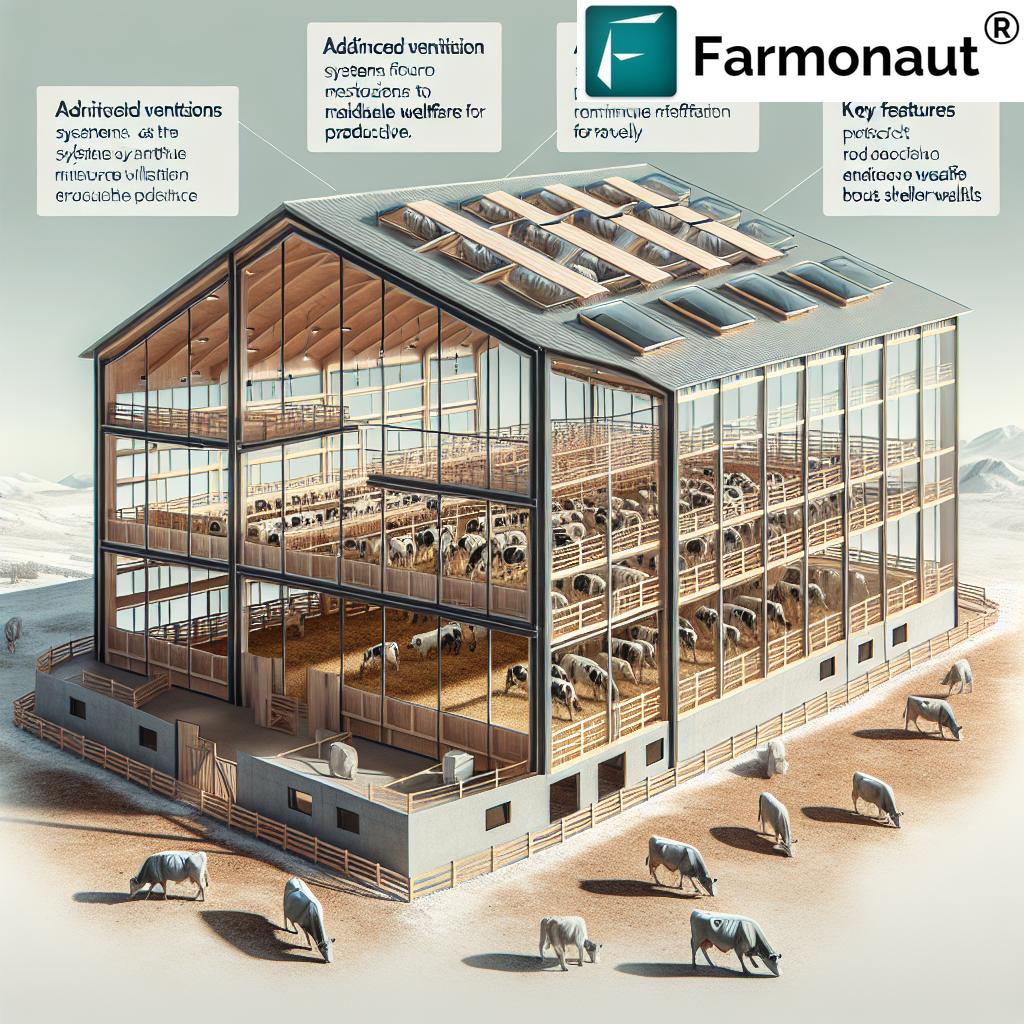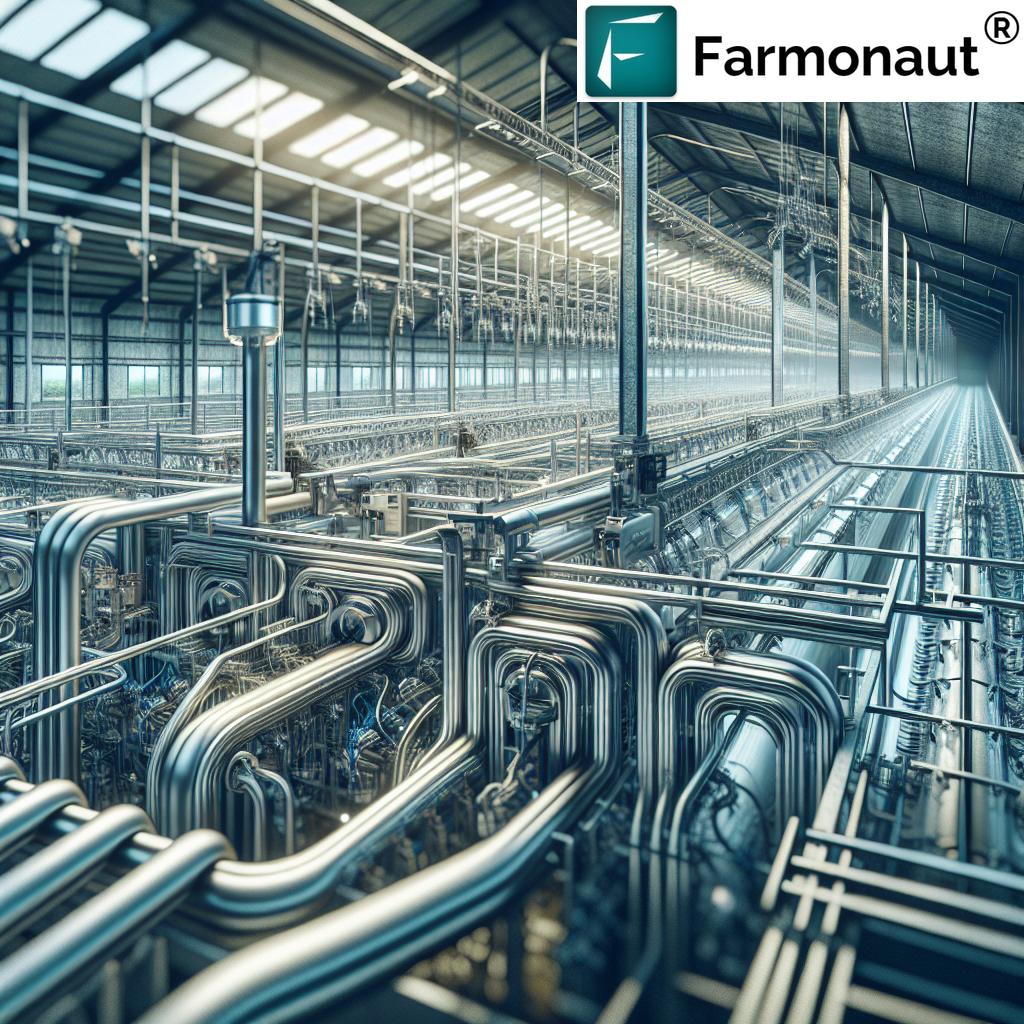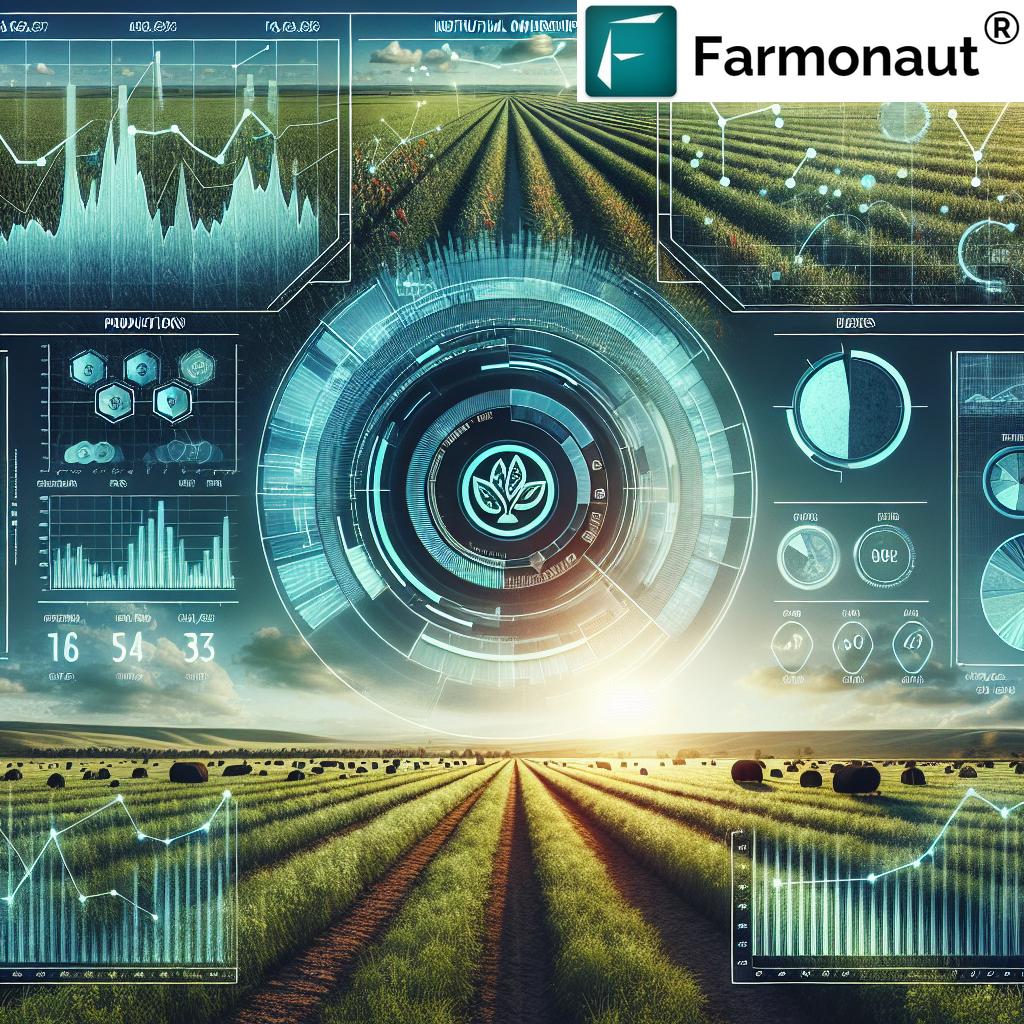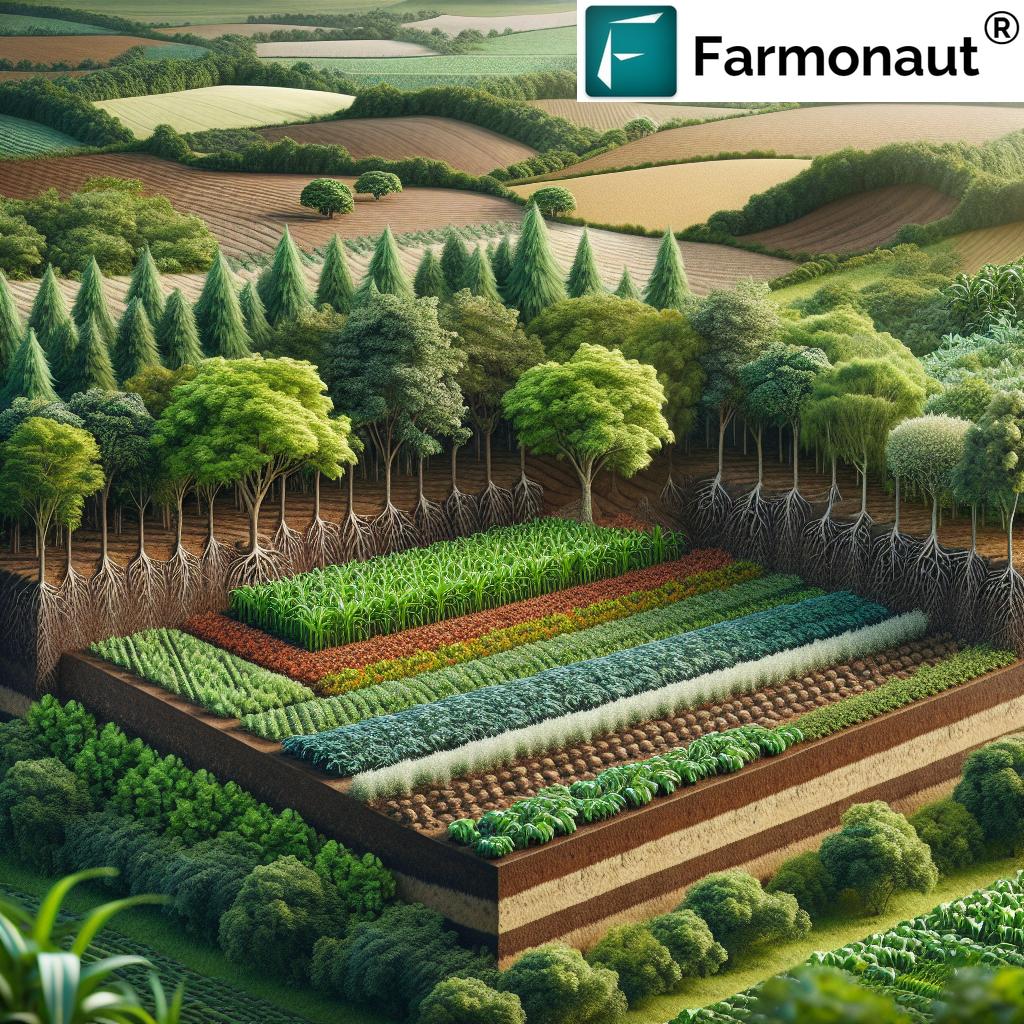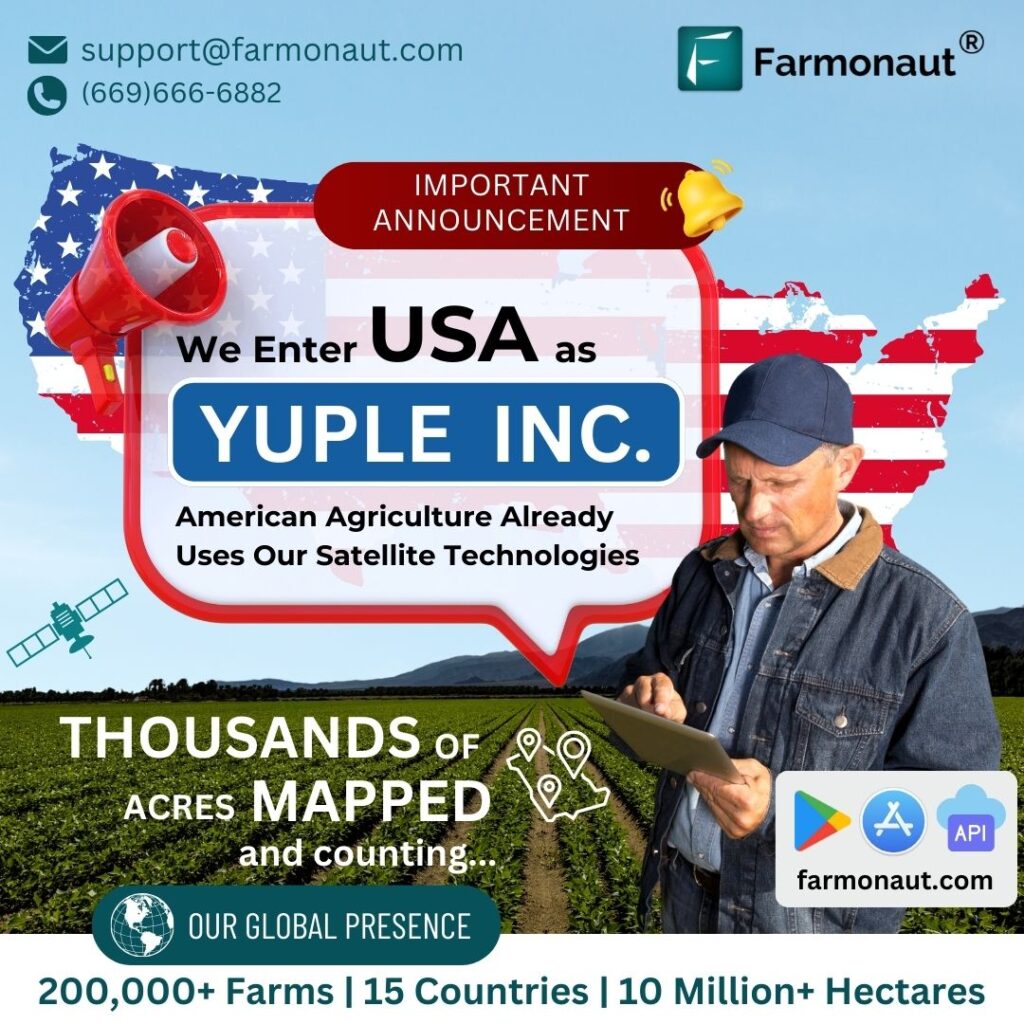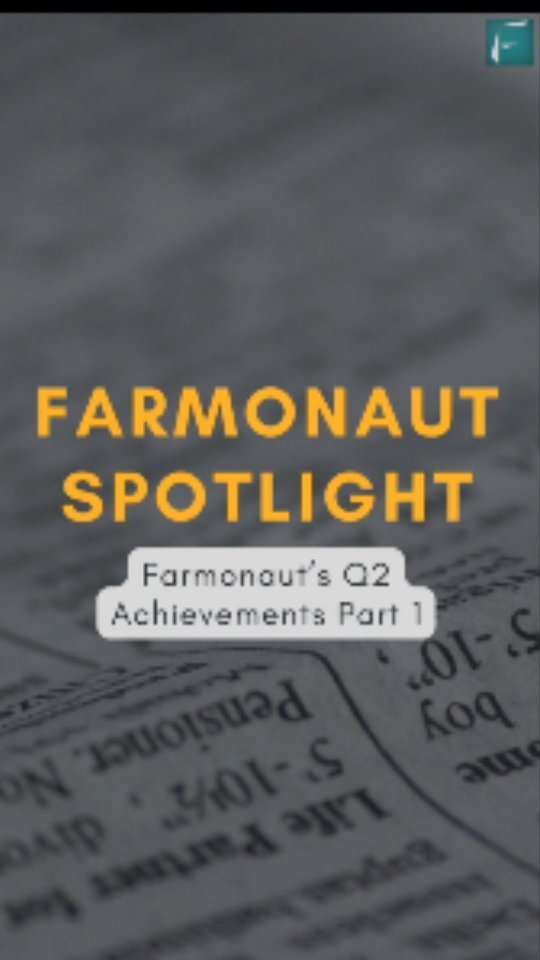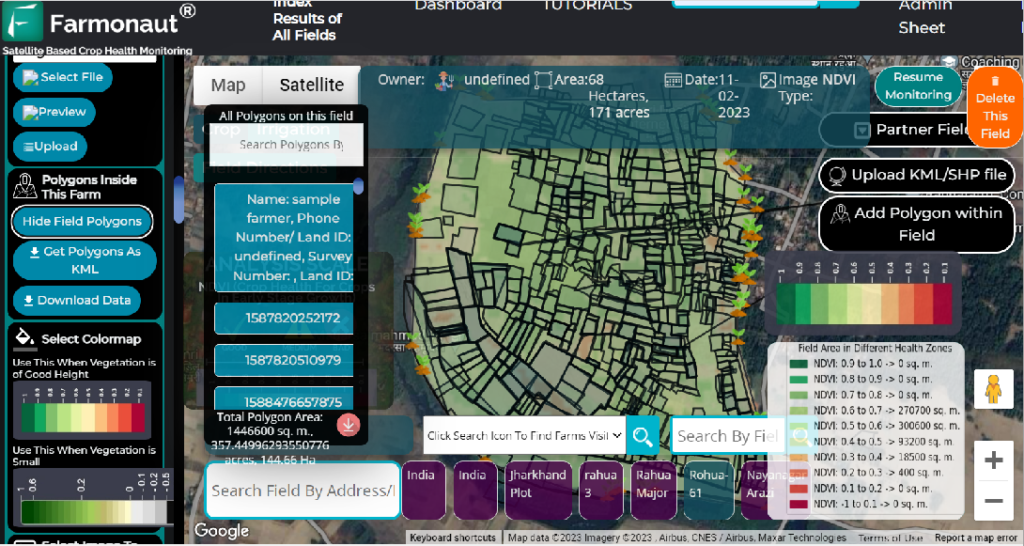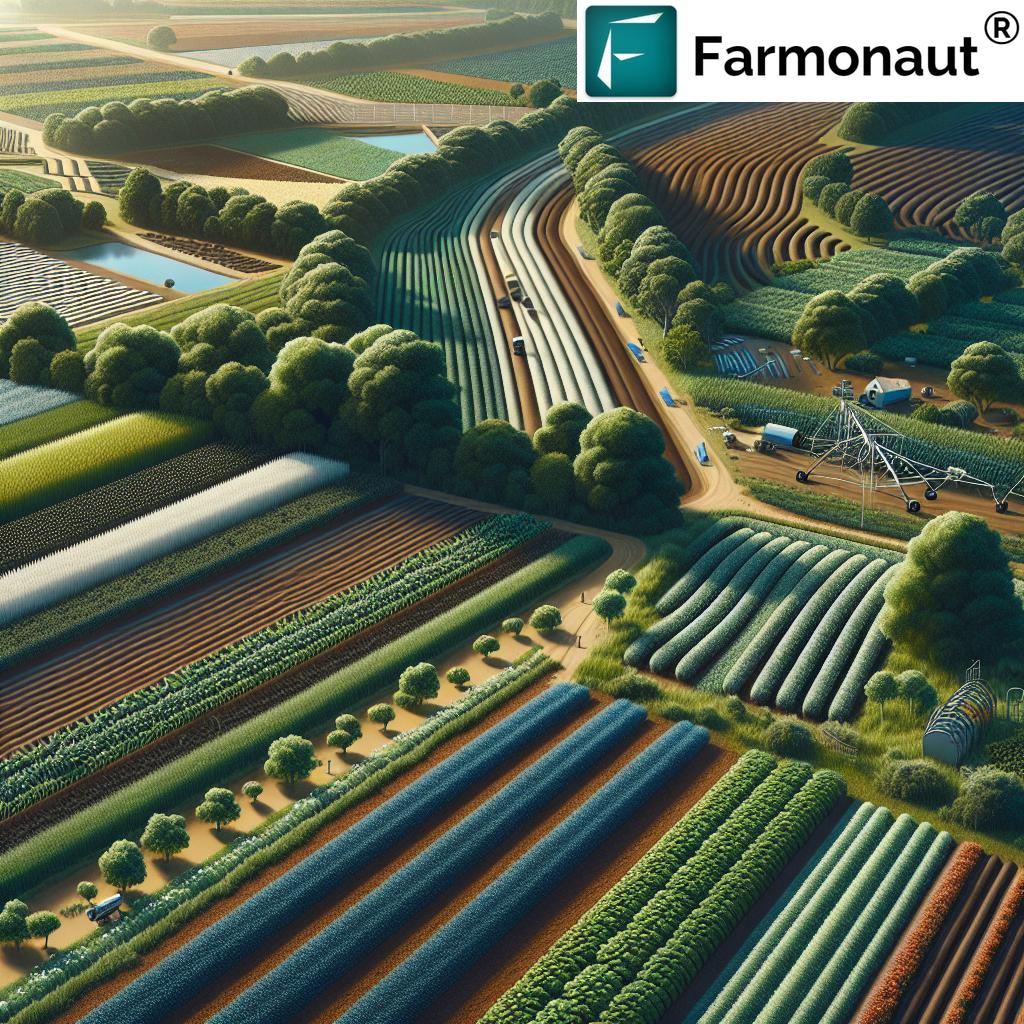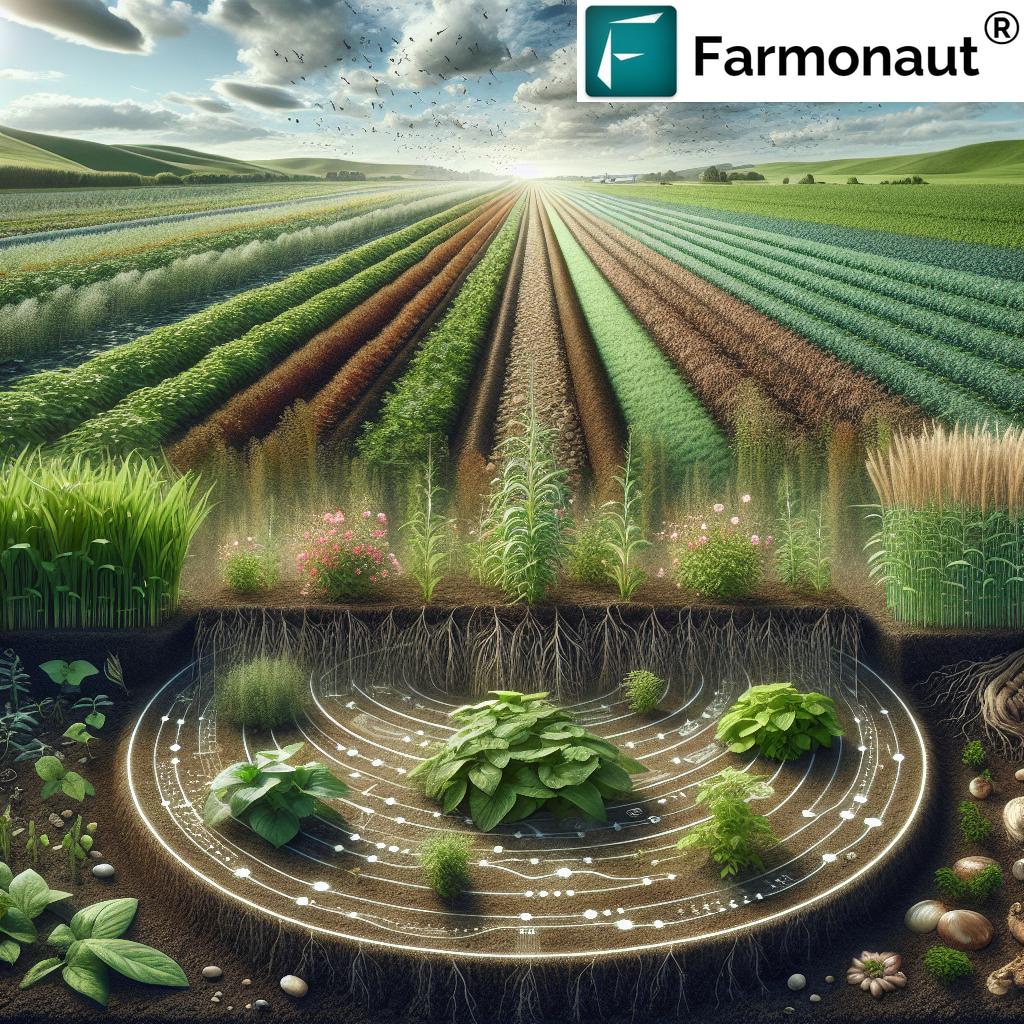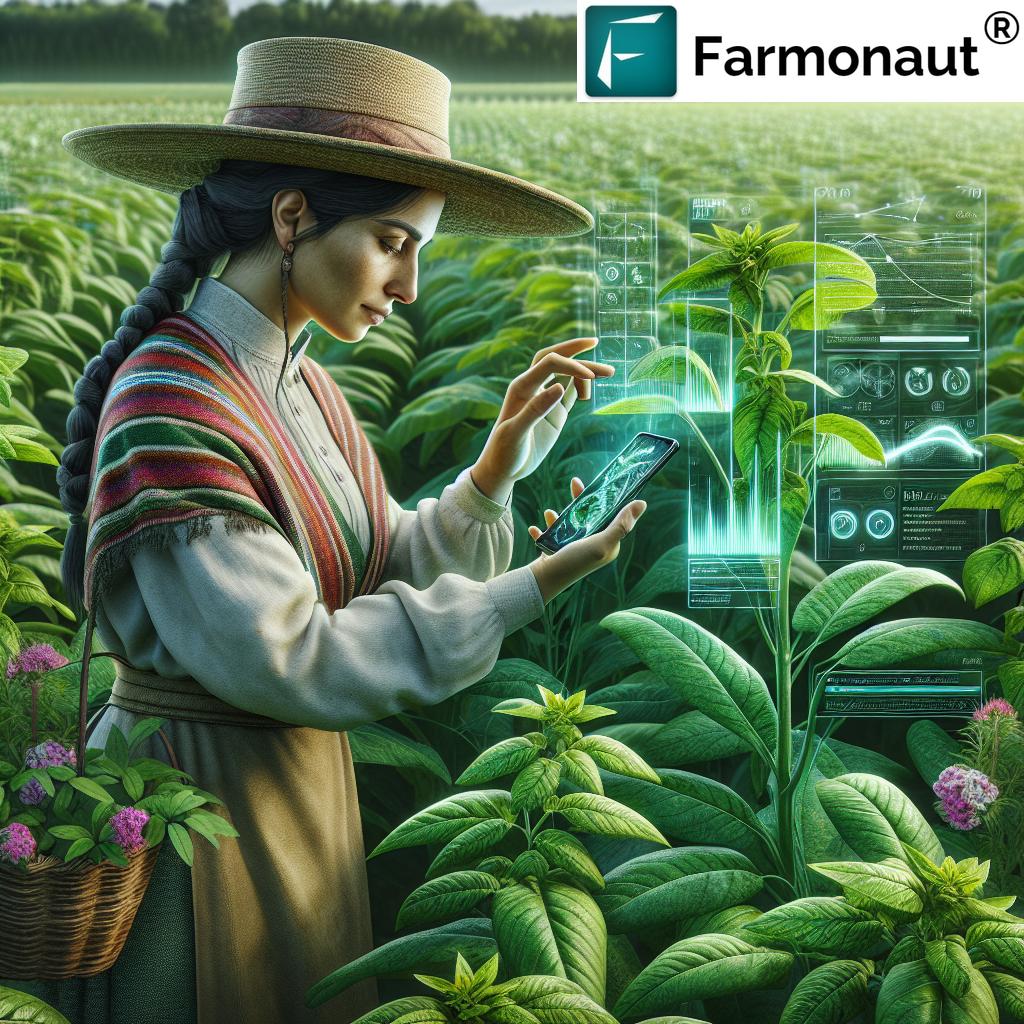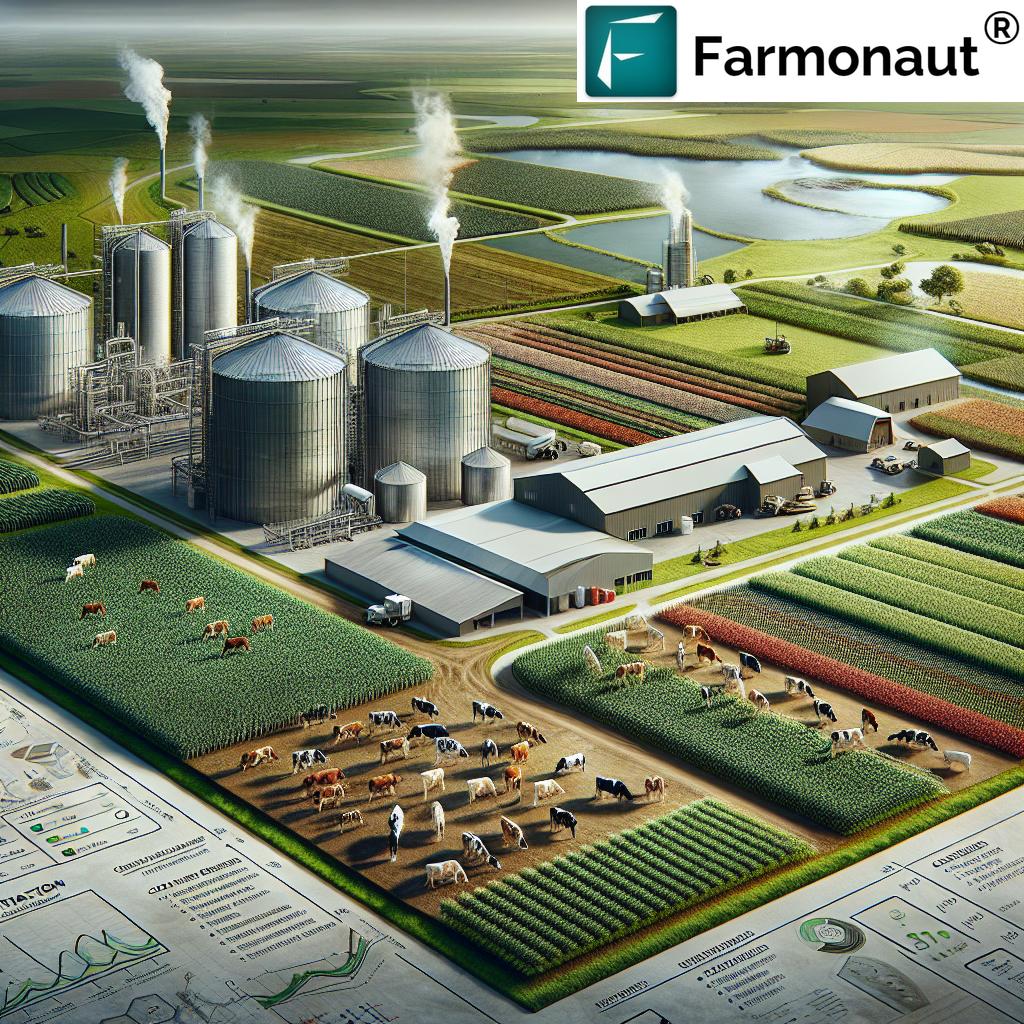Durable Cattle Housing Solutions: 7 Powerful Design Upgrades
“Modern cattle barns with advanced ventilation can reduce heat stress incidents by up to 40%.”
Table of Contents
- Summary: Why Durable Cattle Housing Matters
- Introduction
- Essential Design Considerations for Durable Cattle Housing
- Durable Cattle Housing: 7 Powerful Design Upgrades
- Choosing the Best Materials for Cattle Barns
- Modern Technologies Powering Cattle Housing Solutions
- Sustainable Livestock Housing Practices
- Comparative Table: Comparing Innovative Cattle Housing Design Upgrades
- Farmonaut’s Role in Efficient Cattle Operations
- FAQs
- Conclusion
Summary: Why Durable Cattle Housing Matters
Durable cattle housing is at the heart of animal welfare, productivity, and farm sustainability. A robust cattle barn shields animals from extreme weather, promotes healthy behaviors, and supports efficient farm management. In today’s world of modern agriculture, investing in well-designed, sustainable cattle housing solutions is crucial for any livestock operation aiming to thrive. We’ll explore 7 powerful design upgrades that bring together resilient materials, advanced ventilation systems, natural lighting, and innovative, energy-efficient concepts, all tailored to maximize cattle health and ensure operational efficiency.
Introduction
The agricultural landscape is transforming rapidly, requiring not only an increase in productivity but also improvements in animal welfare, sustainability, and operational efficiency. At the core of sustainable livestock farming stands durable cattle housing—purpose-built structures that integrate smart design, advanced materials, and modern farming technologies.
From small family farms in the Midwest to large-scale cattle operations in Australia, effective cattle barns go far beyond simple shelter. They protect livestock from extreme conditions, foster natural behaviors, and set the stage for superior herd management. In the following comprehensive guide, discover how you can revolutionize your cattle management with innovative barn designs, next-generation materials, and integrated tech—while enhancing animal welfare and environmental sustainability.
“Sustainable building materials in cattle housing can increase structure lifespan by over 30%.”
Essential Design Considerations for Durable Cattle Housing
Every successful cattle barn design starts with thoughtful planning. Whether undertaking a new build or upgrading an old barn, prioritizing the following factors ensures you create an environment that enhances both animal welfare and productivity:
-
Space Allocation:
Providing adequate space is fundamental. Each animal needs enough room for natural movement, lying, feeding, and standing. Overcrowding heightens stress, raises the risk of injuries, and negatively impacts cattle health and productivity. -
Ventilation:
Effective ventilation systems for cattle barns are crucial. Proper airflow maintains comfortable temperatures, controls humidity, and reduces the risk of respiratory issues, especially in regions facing extreme climatic conditions. -
Lighting:
Natural and artificial lighting should be balanced. Adequate light supports circadian rhythms and overall animal wellness, while specific layouts using translucent panels can profoundly increase light penetration into barns. -
Weather Protection:
Reliable shelter must shield livestock from extreme temperatures, rainfall, and wind. Modern structures like hoop barns or well-designed monoslope barns ensure optimal weather protection for livestock. -
Ease of Management:
Efficient layouts with accessible feeding, watering, and cleaning facilities facilitate quick, stress-free animal handling and support overall operation efficiency.
Key Focus: Durable Cattle Housing and Regional Climate
Durable housing designs must also factor in local climate conditions. For example, open-sided barns with large overhangs are ideal for hot, humid regions, while insulated structures with wind barriers are better for cold climates. Prioritizing proper airflow and adaptive designs enhances cattle comfort and minimizes heat or cold stress year-round.
Durable Cattle Housing: 7 Powerful Design Upgrades
Ready to future-proof your livestock operation? Explore these seven transformative design upgrades, each engineered to maximize durability, sustainability, and animal welfare:
-
Ventilated Roofing Systems
A high-performance roofing system is the cornerstone of resilient cattle barns. Ventilated roofs, such as those with ridge vents and clerestory windows, enable continual airflow—removing heat, humidity, and airborne pathogens.
- Reduces respiratory stress and heat buildup
- Minimizes reliance on mechanical cooling
-
Open-Side and Monoslope Barn Designs
Featuring an open wall and sloped roof, monoslope barns optimize sunlight exposure and harness dominant winds for natural cooling. Open-sided barns are suited to promoting natural airflow, sunlight penetration, and comfort.
-
Recycled Composite Wall Paneling
Integrate wall systems built from recycled plastics or fiber composites. These panels offer high resistance to moisture and corrosion, long-lasting durability, and an eco-friendly footprint.
- Lower maintenance and superior longevity
- Enhanced energy-efficiency with insulated options
-
Steel-Framed and Fabric-Covered Structures
Modern barns are increasingly built with galvanized steel frames and heavy-duty fabrics for roofing and sidewalls. These fabric-covered buildings maximize natural light, decrease need for artificial lighting, and offer robust weather protection.
-
Automated Ventilation & Cooling Systems
Deploying automated ventilation solutions—from variable speed fans to automated ridge control—precisely maintains air temperature and humidity in real-time. Systems that respond to changing conditions significantly reduce heat stress for cattle.
-
Solar Energy Integration
Energy efficient cattle barns take advantage of solar panels to offset power used for lighting, cooling, and automated management systems—cutting utility costs and reinforcing a sustainable operation.
-
Automated Manure Collection and Bedding Management
Maintain clean, comfortable environments with automated manure scrapers, slatted floors, and recycling bedding systems. Not only do these upgrades reduce labor, but they keep animals healthier and more productive by minimizing disease risk.
Choosing the Best Materials for Cattle Barns
Material choice is pivotal in boosting the durability and longevity of cattle housing. Let’s break down the top contenders:
-
Steel Structures:
Steel is unmatched for strength and resilience. Galvanized steel frameworks resist rust, extending lifespan even under constant exposure to moisture. Prefabricated steel barn kits further speed up construction while offering long-term, cost-effective durability. According to Star Buildings, steel housing solutions dramatically reduce maintenance requirements. -
Fabric-Covered Barns:
Employing weather-resistant fabrics stretched over steel frames, these structures provide natural light, excellent ventilation, and flexibility in design while keeping construction costs low.
Discover more about durable fabric-covered barns.
-
Recycled Composite Panels:
Newer housing options use wall and roof panels made from recycled materials. These are lightweight, rot-proof, and cost-effective over the long term. Their superior insulation also facilitates more stable barn temperatures. -
Traditional Wooden Barns:
While wooden barns are aesthetically pleasing, they require ongoing maintenance for rot, pests, and weathering. Today’s best practice is to use pressure-treated or engineered wood only in non-structural applications or as accents.
Benefits of These Materials for Animal Welfare and Farm Operations
- Optimized ventilation systems for cattle barns reduce respiratory risk
- Resilient, easy-to-clean surfaces promote hygiene and health
- Stable temperatures minimize cattle stress and improve productivity
Modern Technologies Powering Cattle Housing Solutions
The future of cattle farming is data-driven and connected. Here’s how modern technologies make housing more efficient, sustainable, and welfare-focused:
- Automated Ventilation & Climate Control:
Intelligent systems continually monitor and adjust barn temperature, humidity, and airflow, reducing health risks and energy waste. - Precision Livestock Farming Sensors:
Devices track real-time environmental and animal data—such as temperature, humidity, ammonia levels, and even cattle activity—to inform instant operational decisions. - Automated Manure Management:
Systems such as automatic scrapers and self-leveling bedding improve hygiene and reduce labor costs—all while boosting animal comfort.
Solar and battery-powered IoT sensors make it easier to oversee distributed operations, improving response times and overall productivity.
The Rise of AI and Data Solutions in Cattle Operations
With advances like Farmonaut’s satellite-powered farm management platform, digital tools are helping farmers monitor barn health, manage herd performance, optimize resources, and track carbon footprint—all from their phone or laptop.
Sustainable Livestock Housing Practices
To address environmental concerns and reduce long-term costs, cattle housing now incorporates sustainable practices:
- Eco-Friendly Materials:
Use of recycled steel, plastic composites, and sustainably sourced wood lowers emissions and conserves resources.
(Read more about eco-materials in livestock housing) - Solar Power:
Install rooftop solar panels to make barns energy efficient, using renewable energy for lighting, ventilation, and climate control. - Design for Deconstruction:
Modern barns are increasingly planned for easy end-of-life disassembly and material recycling—a critical feature for supporting circular farming economies.
(Learn about sustainability in dairy housing)
Building to green standards not only ensures regulatory compliance but also commands higher returns in the marketplace.
Comparative Table: Durable Cattle Housing—Feature & Benefit Matrix
| Design Upgrade | Core Feature | Est. Cost ($/sq.ft) | Durability (Years) | Sustainability (1–5 Green Rating) | Animal Welfare Impact | Tech Integration |
|---|---|---|---|---|---|---|
| Ventilated Roofing | Ridge vents, clerestory for airflow | 4.0–8.5 | 30+ | 4 | High | Yes |
| Open-Side/Monoslope Barns | Open wall and angled roof | 5.5–9.0 | 25–30 | 4 | High | Yes |
| Recycled Composite Walls | Eco-friendly, insulated panels | 6.5–10.0 | 35+ | 5 | High | Optional |
| Steel/Fabric Structures | Galvanized frame, fabric covers | 5.0–8.0 | 30–40 | 4 | Medium–High | Yes |
| Automated Cooling Systems | Intelligent fans & sensors | 3.5–7.5 (added) | 15–20 | 3 | High | Yes |
| Solar Energy Integration | Rooftop solar panels | 2.5–4.0 (added) | 25–30 | 5 | Medium | Yes |
| Automated Manure/Bedding | Scrapers, slats, robotic tools | 3.0–5.5 (added) | 12–20 | 4 | High | Yes |
Farmonaut’s Role in Enhanced Cattle Housing Efficiency
Farmonaut is at the forefront of smart farming, offering digital platforms (web, iOS, Android, and API) that empower livestock managers with real-time insights for improved animal health and operational sustainability. Here’s how our solutions can complement your durable cattle housing investments:
-
Satellite-Powered Monitoring:
Instantly assess the status of your barns, open pastures, or feeding areas. Get real-time NDVI, temperature, and moisture data for more informed cattle management. -
Jeevn AI Farm Advisory:
Receive AI-driven recommendations on ventilated housing improvements, barn orientation, and resource allocation for optimal operations. -
Resource & Fleet Management:
Coordinate supplies, monitor equipment, and track cattle movement efficiently through one digital dashboard. Read more on our Fleet Management Solution. -
Carbon Footprint Tracking:
Monitor emissions from barn construction, energy usage, and manure management. Optimize for environmental compliance and showcase your sustainable practices. See our Carbon Footprinting Tools. -
Blockchain-Based Traceability:
Assure buyers of high standards in animal welfare, sustainable housing, and supply chain transparency with our Blockchain Traceability Platform.
Connect via 

 or integrate via our API (developer docs).
or integrate via our API (developer docs).
Frequently Asked Questions (FAQ) — Durable Cattle Housing Solutions
What is the primary objective of durable cattle housing?
To provide reliable protection against harsh environmental conditions, reduce animal stress, improve cattle health, and streamline farm operations—all while ensuring long-term sustainability and cost effectiveness.
What are the best materials for cattle barns in humid or coastal climates?
Galvanized steel frames and recycled composite panels excel in humid and coastal areas due to their corrosion resistance, longevity, and easy maintenance.
How do modern ventilation systems impact animal welfare?
By maintaining optimal airflow, temperature, and humidity, modern ventilation significantly reduces the risk of respiratory problems, heat stress, and discomfort—directly supporting animal health, productivity, and efficient management.
Is solar integration a worthwhile investment for cattle barns?
Absolutely. Solar power not only lowers energy costs but also aids sustainability goals, making your farm more energy efficient and less reliant on fossil fuels. Additionally, government incentives for solar adoption in agriculture can improve ROI.
Can automated manure management systems benefit small farms?
Yes, automated systems can be scaled for small and medium-sized farms. They reduce labor, enhance cleanliness, and support animal welfare regardless of operation size.
How can I monitor the effectiveness of my cattle housing upgrades?
Farm management platforms like Farmonaut provide real-time assessments of barn conditions, animal behaviors, and environment metrics. This data helps validate housing design benefits and highlight areas for improvement.
Where can I learn more about sustainable livestock housing solutions?
Explore detailed resources from agricultural extension agencies, livestock architects, and platforms dedicated to sustainable farming practices. Farmonaut’s Farm Management Tools also offer data-driven recommendations for housing improvements.
Conclusion: Building the Future of Livestock Operations
Building or upgrading a cattle barn is no small feat, but the payoffs in animal welfare, productivity, and sustainability are undeniable. By adopting the seven powerful upgrades discussed here—including advanced ventilation, strategic use of steel and sustainable materials, solar integration, and automated systems—cattle producers can confidently navigate the challenges of modern farming.
The investment in durable cattle housing quickly pays off with healthier livestock, reduced operational stress, improved efficiency, and measurable contributions to climate sustainability. Let technology, data insights, and the best of modern barn design be core pillars of your farm’s future.
For the latest in sustainable livestock housing, advanced advisory, and field monitoring, leverage digital platforms like Farmonaut to optimize every square foot of your cattle barn—where comfort, health, and innovation intersect.
Explore the next chapter of farming with precision—get started with Farmonaut now.


